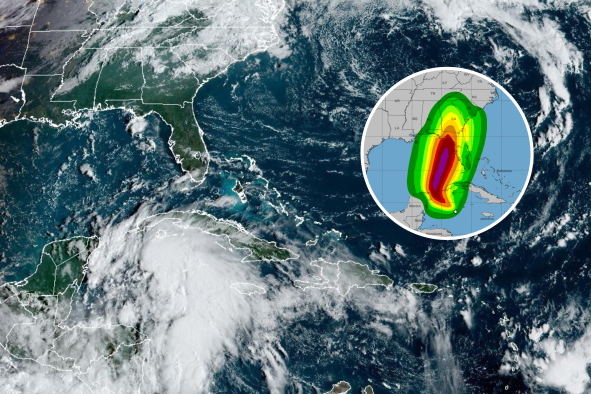We might be able to defend Earth from a future asteroid impact using something straight out of a sci-fi movie: a blast of X-rays.
This pulse of X-ray radiation, produced by a nuclear explosion, could be used to vaporize the surface of an asteroid, changing its trajectory just enough that it misses our planet, according to a new paper in the journal Nature Physics.
In the wake of NASA's Double Asteroid Redirection Test (DART), which showed that asteroids could be shifted by slamming a spacecraft into them, this X-ray technique could further prop up our planetary defense arsenal.
"[We] predict that asteroids up to a diameter of (4 ± 1) km [1.7 to 3.1 miles] can be deflected with this mechanism, showing a viable way to prepare for future planetary defense missions," the researchers wrote in the paper.
If an asteroid hit our planet, it could be catastrophic to human society and millions of other species.
"Asteroid impacts are among the many natural hazards facing civilization. Although most asteroids bypass the Earth or cause little damage, the largest collisions have led to regional devastation and even the elimination of habitable climates," the researchers wrote.
"The Chicxulub asteroid impact triggered mass extinction, mega-tsunamis and a spell of global warming that lasted for around 100,000 years."
Astronomers from the Sandia National Laboratories in Albuquerque, New Mexico, described in the paper how their laboratory experiments are proof-of-concept that this X-ray technique could work on real asteroids.
The researchers used X-rays—generated by argon plasma—on two 12-millimeter-wide mock-up asteroids in a vacuum, one of which was made of fused silica and the other from quartz. They found that the X-rays heated up the miniature asteroids enough to produce a plume of vapor on one side, which propelled them in the opposite direction.
"The primary mechanism involves using X-rays to rapidly heat the target surface, causing it to vaporize and expand into the adjacent vacuum. The expanding gas pushes against the asteroid, transferring momentum in the direction of the intercept," the researchers wrote.
Scaling these velocities up to the equivalent of a real asteroid heading toward Earth, they found that this could indeed help to deflect an asteroid's path.
While the DART mission showed that sending a fast-moving spacecraft zooming into the side of an asteroid could indeed deflect it, this kind of tactic would take years of preparation and planning. Additionally, it would only work against smaller asteroids, and may have minimal effects on larger space rocks heading our way.
By exploding a nuclear bomb high above the surface of the asteroid, the burst of X-rays could be enough to vaporize the surface to the point that the escaping vapors shift the rock out of our path, the researchers explain.
Do you have a tip on a science story that Newsweek should be covering? Do you have a question about asteroids? Let us know via science@newsweek.com.
References
Moore, N. W., Mesh, M., Sanchez, J. J., Schaeuble, M., McCoy, C. A., Aragon, C. R., Cochrane, K. R., Powell, M. J., & Root, S. (2024). Simulation of asteroid deflection with a megajoule-class X-ray pulse. Nature. https://doi.org/10.1038/s41567-024-02633-7
Disclaimer: The copyright of this article belongs to the original author. Reposting this article is solely for the purpose of information dissemination and does not constitute any investment advice. If there is any infringement, please contact us immediately. We will make corrections or deletions as necessary. Thank you.



